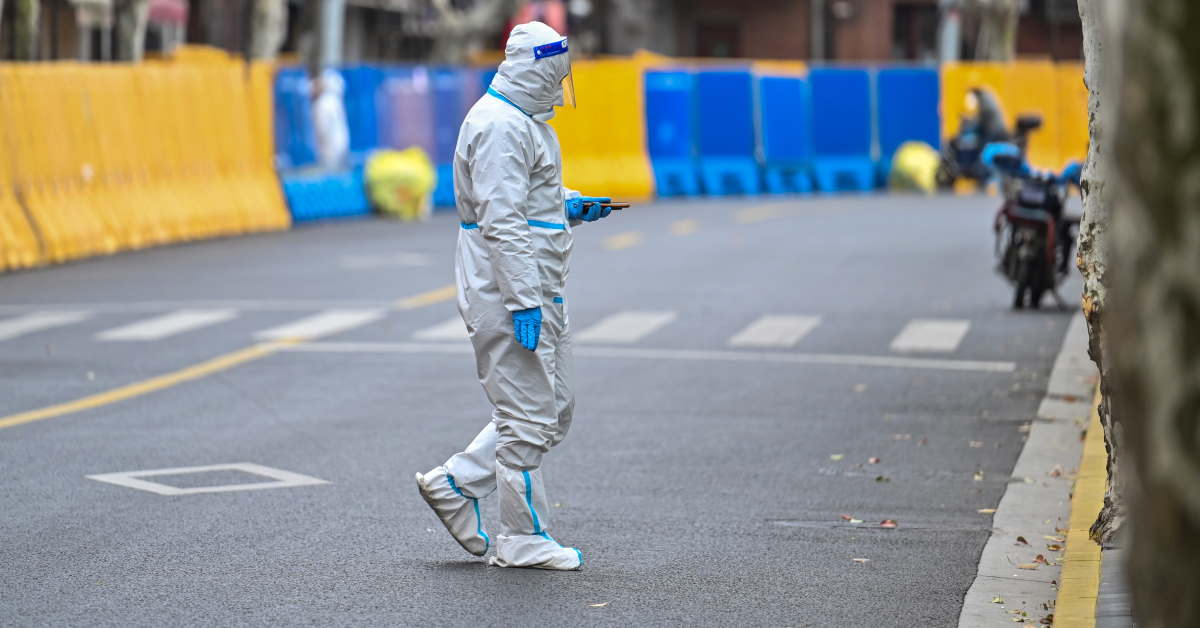A top Shanghai official conceded Thursday the Chinese financial hub had been "insufficiently prepared" for its latest COVID outbreak, as criticism mounts over lockdowns that have caught residents off guard.
The eastern megacity of 25 million has been split in two as part of a rolling lockdown plan to battle China's worst outbreak in two years.
The spread of the Omicron variant is testing the country's zero-COVID strategy, which aims to crush virus clusters as soon as they emerge.
Residents in the eastern half of Shanghai have been confined to their homes since Monday and subjected to testing, before the restrictions are switched to the more populated western half on Friday.
The curbs, which kicked in hours after being announced on Sunday evening, spurred panic-buying at supermarkets and sent vegetable prices surging.
And some residents in western Puxi said they were already being ordered to stay at home days before the official lockdown.
One of Shanghai's top officials, Ma Chunlei, made a rare admission of failure Thursday, saying in a statement that authorities had been "insufficiently prepared for the substantial increase in infected people".
"We sincerely accept everyone's criticism, and are working hard to improve," Ma said in a briefing.
He added that the city was beefing up its resources for COVID testing and patient isolation.
Puxi resident Dong Jun said his district was unexpectedly placed under lockdown Wednesday, two days ahead of the official start date.
"I've been keeping my fridge full because of my previous experience of lockdown, but it still caught me off guard when I woke up and heard a lockdown was announced," he told AFP.
"It's quite a hassle to maintain a certain amount of life necessities."
Hours before it was Puxi's turn to lock down, the streets were subdued with few cars on the road and many restaurants and shops already closed.
Meanwhile, as residents on the eastern side of the city prepared to finish their four-day closure, authorities said that buildings where positive cases had been found would be subjected to a further ten days of lockdown.
Starting from 5:00 am today, authorities would "judge the results" of the first lockdown and decide the management of each area, they said in a statement late Thursday.
Pandemic 'Exit Strategy'
Residents complained online about a lack of food, problems accessing medical services, and fears that positive cases were not being transferred out of residential buildings quickly enough.
Two separate asthma patients have died after reportedly being refused medical services due to COVID restrictions.
Several exhibition halls in the city have been converted into mass quarantine centres, lining up thousands of beds for patients with mild symptoms.
Ma said authorities were "speeding up the transfer and isolation of infected people, minimising the time they remain in the community".
Shanghai reported more than 5,600 positive cases Thursday, most of them asymptomatic.
He cautioned that the lockdown of Shanghai's western half will involve a larger group of about 16 million people and asked for patience.
"Regular life will surely return soon," he said.
The World Health Organization's (WHO) emergencies director Michael Ryan said it was important for all countries including China to have a plan to wind down pandemic restrictions.
"That exit strategy, for any country, has to be careful, especially when you have been so successful up to that point," he said at a Geneva press conference on Wednesday night.
He pointed out that there is one seventh of the world's population in China, and authorities will have to "define a strategy that allows them to exit safely, with their population having maximum protection while re-engaging with social and economic life".
